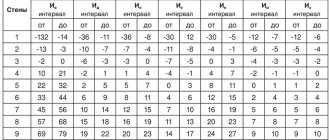Physical violence is a one-time or repeated intentional action against another person (family member, subordinate, child, etc.), committed against the will and desire of the victim. The action itself is an unlawful act of a person or group of persons, carried out using physical force - rape. The definition of violence is a political concept that changes over time. Each society creates interpretations of violence characteristic of its time and establishes norms and punishments in case of their violation. Violent actions can take physical, psychological, sexual or economic forms.
Violence is one of the ways of expressing individual or group aggression, which carries a threat of loss of life, health, violates dignity, physical integrity, freedom, harms physical or mental health, and also causes suffering and moral damage to the victim. This behavior is characterized by aggressiveness and is destructive towards another person.
Causes of antisocial disorder (violence)
— Violation of the sense of identity, mistrust of people. — Provoking behavior and aggression on the part of the victim. — Overwork, emotional and professional stress. - Unsuitable profession, financial difficulties. - Uncertainty, low self-esteem. — Alcoholism and unemployment in the family. - Chronic feeling of emptiness and boredom. — Adaptation disorders (limited ability to effectively overcome daily difficulties). - Chronic sadness, depression, feelings of rejection and loneliness, a tendency to isolate, resentment. - Impulsivity (uncontrollable outbursts of anger). - Anxiety, restlessness, emotional instability. - Lack of communication, hostility towards others. — Criminal history (drugs, prostitution, crime). - Financial difficulties, helplessness. - Emotional disorders, mental illness. — Organic brain damage, epilepsy.
Causes of violence by children towards other children and adults:
— Destructive influence of peers. — The influence of computer games. - Family breakdown. — Aggression in the family, child abuse. — Negative influence of television, video, cinema, the Internet.
Notes
- Mortality and Burden of Disease Estimates for WHO Member States in 2002 (xls). World Health Organization
(2004). Archived from the original on July 30, 2012. - ↑ 1234
World Health Organization. Violence and its impact on health. World Situation Report. 2002. - "Global Burden of Disease", World Health Organization, 2008.
- Every minute in the world... memento mori.
- Stalin through the eyes of a psychotherapist Chapter 4 - Congress of the Stavropol intelligentsia.
- The Neurobiology of Violence, An Update Archived November 27, 2007, Journal of Neuropsychiatry Clin Neurosci 11:3, Summer 1999. As Mexican Biologist and Scientologist Adri Rodriguez says, Violence is a recurring motif in today's society.
- Heather Whipps, Peace or War? How early humans behaved, LiveScience.Com, March 16, 2006.
- Cindy Fazzi, Debunking the “killer ape” myth, Dispute Resolution Journal, May-July 2002.
Diagnostics
Physical violence always carries the risk of injury and death. Violent actions include kicking, slapping, punching, kicking, pinching, biting, beating, and using weapons. Everything that happens is always accompanied by psychological pressure.
There are two types of violence, differing in emotional state:
- Spontaneous violence (hot) - characterized by anger, rage, aggression. It is expressed in various forms: screaming, fist fights, compulsive (uncontrollable) behavior, violent infliction of pain. At its core is anger, which is born from one’s own powerlessness and disappointment in life. During unintentional violence, pent-up feelings of anger and rage are released. The result is a loss of emotional management and behavioral control. This type of violence appears and disappears quite quickly and is the most expressive.
- Intentional (cold) violence - it is not caused by rage, anger or the intention to cause harm. The peculiarity of this type of violence is that the offender wants to achieve a certain goal with his actions. Cold violence is the deliberate implementation of revenge. Very often, a rapist takes violent actions in order to realize his own beliefs, philosophy, faith and ideology.
Violence can be direct - the act of overwhelming use of physical force and psychological pressure. Implementation occurs in a direct way, directly from the rapist to the victim. Indirect (not direct) violence is the opposite of direct violence. It does not include physical violence or assault. Actions are often masked by natural behavior and are difficult to recognize. This form of violence exists hidden in society, politics, culture, and family.
Sexual violence. This form of behavior is coercion into sexual contact against the will of a partner (rape), unacceptable sexual practices, forced to watch pornographic films, filming during sex, criticism of a partner’s sexual behavior, blackmail and coercion into sexual life, coercion to have sex with other persons, sadistic forms sexual activity, demonstrative jealousy, etc.
Domestic violence occurs in all societies and cultures. Families where this happens carefully hide their problems. Violence usually occurs “behind closed doors.” Many victims suffer abuse for years and continue to hide it. They blame themselves for being victims and get used to this situation. One of the reasons is that they have resigned themselves to fate and believe that they must endure the pain, not tell anyone, the victims feel sorry for condemning the rapist. They interpret aggression towards themselves something like this: “I’m no good,” “I’m the reason for the anger,” “I did something wrong,” “My partner is upset, I need to support him.” Victims are unable to understand where the line is between normal and violent behavior, which has long been different from all legal and social norms. Violence among children and adolescents. The phenomenon of violence affects almost all areas of human life in every age group. Aggression is becoming increasingly common among children and adolescents, especially in school environments. According to statistics, 15-17% of children have encountered violence. Scientists have calculated that the average child between 7 and 8 years old watches so many scenes of violence on the screen that to see it in reality, he would have to be a criminal for 580 years. Before the age of 18, a teenager sees 8-11 thousand video murders. Thus, the progress of violence and aggression among adolescents is strongly influenced by the media - cinema, television, video, the Internet, magazines for youth.
- Often teenagers transfer their aggression to school, trying to take revenge for the lack of a happy childhood, due to dislike by their parents.
- The school is a prototype of the social environment and should prepare the child for normal functioning in society. This is a place of intense socialization, self-identification in relationships with adults, and the construction of one’s own hierarchy of values. The policy of many schools is to force children to study, but, as a rule, every force to take any action gives rise to protest. The form of manifestation of this can be aggression and violence.
- It is a very common occurrence for teenagers to fall in love at school, thereby becoming more vulnerable to criticism directed at them. If teachers make fun of the student’s feelings in the presence of classmates, focus on the lover’s poor performance, or sneer at the topic of love, then the student’s well-being is disturbed and there is no joy from communicating with friends and peers. It is also not acceptable for a teacher to mock a student in the presence of the class (call him lazy, ignorant, stupid).
- Children who do not receive support at home may seek acceptance in various informal groups, which usually have negative influences. The importance of forming peer groups is very high when it comes to the socialization process. The right group creates a kind of arena for the collision of social processes. The group may include children from different backgrounds. This makes it possible to compare many aspects of life and exchange cultural elements. A company of teenagers with equal partners will have a positive influence on the child, as it is formed by common tastes and interests.
Types and forms
In psychology there is no single classification of types of violence. I propose to consider typologies based on the nature of violent actions and location.
Depending on the nature of the action, violence can be psychological, physical and sexual. Let's look at each type in more detail:
- Psychological violence is actions aimed at humiliating, insulting, ridiculing, mocking a child or adult. This type is sometimes called emotional abuse.
- Physical violence is the intentional infliction of physical harm. An authoritarian parenting style with corporal punishment can also be classified as physical abuse.
- Sexual violence is sexual gratification with the help of another person, but against his desire. The victim is physically or psychologically unable to fight back or, due to the peculiarities of his development, does not understand the nature of the aggressor’s actions. Coercion and inducement to sexual intimacy under threats is also sexual violence.
Depending on the location of events, violence can be family, school, social, or work:
- Family violence is psychological, physical or sexual violence against a child or adult in the family. In this case, physical and psychological violence are often combined. The purpose of domestic violence is to intimidate, instill a sense of fear, and gain control over the victim. Some parents try to achieve respect for their authority, and some spouses try to gain respect for their partner.
- School violence (bullying) is physical or psychological violence between children or between teachers and students. The direction of the relationship is different: violence of children against the teacher, violence of the teacher against students, humiliation of one child by classmates, violence of one student against another (others).
- Violence at work (mobbing) is often psychological violence in the form of insults, withholding information, misinformation, gossip, and pressure. Occurs between employees or employees and management.
- Social and domestic violence - psychological, physical or sexual violence from strangers or unfamiliar people on the street, in transport and other public places.
As we see, violence, by the nature of its actions, does not depend on the location and can belong to any category. As for the forms of violence, they tend to infinity (whatever the imagination of the aggressor is enough for). Popular forms include shouting, insults, beating, kicking, pushing, slander, and damage to property.
How to prevent violence
- It is imperative to involve the police and medical workers in scandals.
- In every case of violence, call the hotline.
- Contact shelters and assistance centers, receive free legal advice.
- Look at the situation differently, admit yourself as a victim.
- Prepare yourself for an attack, reconsider your behavior (perhaps it is provocative).
- If there is a threat of attack, it is better to run away; if this is not possible, then shout.
- Try to gain independence from your partner (in financial or housing matters).
- Learn more about human rights:
“No one has the right to force you to engage in unacceptable behavior.” — The law protects you and you have the right to any help. “You have a responsibility to protect yourself from violence and its consequences.”
You should limit yourself from watching scenes containing violence. Nowadays, various on-screen images of violence are very common: harsh and shocking images, computer games (with destructive content or murder). In the process, the viewer involuntarily associates himself with the character of the killer, and then the aggression may go beyond the scope of the screen image.
The role of the educator or teacher in preventing violence is to immunize children from the negative effects of the media. To promptly identify and protect children from such cases at school, as well as outside it.
Preventive measures by the state.
- Creation of a “one-stop shop” principle for victims of violence.
- Anonymous consultation.
- Dissemination of information about violence (brochures, articles in printed publications)
- Creation of rehabilitation centers and temporary shelters for victims of violence.
- Improving the legislative framework.
- Involving volunteers to identify, prevent and combat violence.
Prevention by parents.
Parents should interfere in all the affairs and interests of children, since proper relationships in the family are not enough for the educational environment of the child. You need to monitor what children watch on TV, how they spend their free time, and who they communicate with. But often, due to being very busy, there is no time for this and it turns out that mom and dad are absent from the child’s life. Parents should be more tolerant of children’s aggressive behavior, increase the frequency of educational activities, and set a specific fine for any signs of aggression.
The mechanism of development of psychological violence in the family
To avoid various forms of violence, it will be useful for many to know the stages of its development:
- The height of tension under the influence of criticism from the spouse (“Where are you dressed up?”, “If you chat with Anka, you will become as stupid as she is”). The phase lasts for a long time as women react calmly and try to defuse the situation, mistakenly hoping to reduce the outbreak of violence.
- Violence. Continues for a short period of 2-24 hours. The tension accumulated in the previous stage finds a way out, and intense discharge occurs. Tempers of anger are in full swing. Violence occurs sporadically or constantly.
- Reconciliation. After the violence, the offender becomes affectionate and attentive, tearfully asks for forgiveness, desperately swears eternal love. Partners believe in rapid healing, quickly forgetting previous grievances.
Further relationships occur in a vicious circle: nagging, prohibitions, violence and again impeccable behavior, sweets, bouquets, empty promises.
Important! Over time, the “honeymoon” phase disappears, leaving violence and relative truce.
How to recognize violent tendencies and when to see a doctor
You should be wary:
- Lack of respect for social norms.
- Incorrect assessment of one's actions.
- Those prone to violence do not use previous experience and do not think about the consequences of their behavior.
- Low tolerance for what is happening, lack of control over emotions and actions. Aggression, lack of fear.
- Taking pleasure in causing harm to others.
- Disregard and indifference to the feelings of other people.
- The tendency to manipulate others by playing on the highest feelings.
- Inability to maintain a strong relationship with a partner.
- High threshold of excitement and fear.
- Emotional coldness and lack of emotions.
- Tendency towards substance abuse.
- Lack of guilt, empathy, shame, responsibility, morality, lack of conscience.
- Inability to delay gratification of needs (sexual, eating, etc.)
- Antisocial behavior.
- Inability to plan for the future (focus on the present) and predict the consequences of one's actions.
- There is a lack of understanding.
- They do not see the boundaries between reality and fiction, truth and lies.
- Atypical (unusual) reaction to alcohol.
- Often blackmailed with suicide.
In children:
- Pugnacity, malice, indifference to rewards and punishments.
- They reject significant people in their lives (parents, grandparents, teachers).
- Frequent failures at school, running away (from home, from school).
- Self-harm (including suicide attempts).
- In the case of a tendency towards sexual violence: very mobile and active during conversations related to sex, busy looking for younger children to satisfy their own sexual activity. It seems to them that they own certain secrets related to sex.
If you have several of the above symptoms, you should consult a specialist (psychiatrist, psychologist, psychotherapist). The presence of these signs only reveals a person’s predisposition to the disease, but such people are not yet criminals. With timely assistance, it is possible to prevent the development of the disease.
Cases of development of mental illness in victims of violence and their treatment
Postpartum depression - found in victims if they were sexually abused in childhood. The cause of the disease is that the victim remembers the harassment and feels like she has a bad mother. The disorder is corrected by psychotherapy.
Bipolar disorder - when a woman has experienced domestic violence from her husband. Antidepressants and mood-leveling drugs (carbamazepine, melepsin) are used in treatment.
Depression (short-term or chronic) - the development of the disease is caused not only by violence, but also by the procedures associated with the use (trial, contacts with the rapist in the courtroom and in the police station, places where this happened, investigative experiments, etc.) . The main form of help for these people is individual and group psychotherapy and pharmacotherapy with antidepressants. Psychiatric help (including pharmacological) becomes necessary when symptoms interfere with the treatment process. If victims do not seek help, they most often resort to alcohol in an attempt to get away from a stressful situation. Addiction may develop, and this will seriously complicate further treatment and rehabilitation.
Organic brain diseases - head injuries resulting from physical violence cause irreversible changes in the central nervous system. Such as cerebral hemorrhage, then post-traumatic epilepsy and other brain dysfunctions develop. The prognosis is unfavorable. Patients are treated mainly in psychiatric hospitals.
Signs
Characteristic manifestations:
- Ban on communication, new acquaintances.
- Fanatical jealousy for no reason.
- Surveillance. It starts with browsing social networks, phone. Gradually, he can move on to daily monitoring of all actions.
- Limitation of responsibilities. The partner prohibits the person from doing usual activities in order to limit him from contact with society.
- Shifting responsibilities. The manipulator shifts responsibilities to the victim in order to show his superiority and subjugate the person.
- Constant presence. Due to the desire to constantly control the partner, the manipulator tries to always be nearby. He can hide it behind any activity.
Manifestations of emotional aggression:
- Humiliation. In simple communication and everyday situations, insults predominate.
- Contempt. There is ridicule of personal interests, professional activities, appearance, religious, political views, hobbies.
- Despotism. The manipulator behaves arrogantly. He points, gives orders.
- Criticism. It manifests itself through ridicule, caustic jokes regarding intellectual abilities, physique, personal interests, and daily activities.
- Threats. Intimidation that affects close relatives, partners, children.
Threats during psychological violence may concern physical harm to others or suicide of the manipulator.
Treatment, rehabilitation of the victim
It is quite difficult to identify and treat victims of violent acts, since it often happens that violence never leaves the walls of the apartment and its manifestations are carefully hidden by the victims themselves. Even the closest family and neighbors do not know what is happening next to them. According to statistics, most victims are embarrassed that others will find out, they are afraid of misunderstanding, gossip, or that their actions will not bring the desired effect.
Violence is closely associated with addiction to psychoactive substances (alcohol and drugs), and disclosing such details to the law can lead to loss of work and thereby family income.
The psychologist must put a lot of effort into convincing the victim of violence that the situation itself is not what it is, and helping the victim admit that she needs help. To say that there are ways to combat violence and that you should trust law enforcement agencies.
Unfortunately, people in our country are afraid to seek psychiatric help, but recently the situation has begun to change for the better, especially in large cities. The following available forms of psychological assistance to victims of violence can be identified:
- A consultation is a meeting, the main purpose of which is to identify the problem and then contact a more specialized specialist.
- Psychological advice - can be a telephone call or letter, or online consultation. The goal is to obtain information and solve the problem.
- Psychotherapy is regular psychological support aimed at understanding the sources of symptoms of psychological discomfort and suffering of the victim. The duration of therapy and its intensity depends on the severity of the disease. Psychotherapy is a set of methods for treating various disorders and psychological problems. The goal of psychotherapy is to eliminate post-traumatic symptoms.
The most popular are:
- Individual psychotherapy - when a patient alone with a psychotherapist finds a solution to his problems. — Group psychotherapy, in which there are several people with similar problems. Treatment involves interaction between group members, support for each other, and a joint search for solutions to problems. — Family psychotherapy is meetings with a psychotherapist with the whole family. During the sessions, family relationships, family structure, and communications with other people are analyzed.
Prevention
For the purpose of prevention, it is necessary to form a stable attitude about the inadmissibility of violence in any of its shapes and forms. You cannot adhere to the victim mentality; you need to know about dependent relationships and be able to identify them. At the same time, it is necessary to maintain self-esteem and self-esteem at an adequate level, and to know methods of psychological and physical self-defense.
People with a special victim type of thinking become victims. But at the same time, it is important to understand that not everything depends on the person himself. Anyone can become a victim of violence, but you have the power to minimize this likelihood.
Treatment of antisocial disorder (violence)
Treatment of the disease is very difficult because the rapist does not experience any motivation for treatment. Such a patient’s independent appeal to a doctor is excluded. Placement in a medical facility becomes possible only when the rapist tries to avoid punishment. Fear of justice only temporarily stops him from antisocial actions. In all other cases, patients are brought to doctors by law enforcement agencies for the purpose of forced treatment or psychiatric examination.
The psychopath suffers because of his own imperfection and refuses to admit it. He is unable to be honest and sincere with the therapist. This makes it difficult to collect an anamnesis (history) of life and illness. Attempts to treat such a patient are not very effective.
Elimination of aggressive behavior in rapists occurs through cognitive psychotherapy. A patient’s dependence on violence is usually due to the fact that he does not know how to respond correctly to ridicule, overcome embarrassment, and does not ask for help. The psychotherapist helps the patient gain appropriate experience to resolve conflict and stressful situations that cause outbreaks of aggression and violence.
Bullying and discrimination
Bullying is an aggressive form of persecution of one or more people within a complex group (school, college, work team). Discrimination is expressed negative attitudes and violence, prejudiced attitudes caused by people's belonging to a particular social group.
These two phenomena also have a negative impact on people's health. They can increase the risk of developing diabetes mellitus and heart and vascular diseases; for example, according to statistics, in America the highest incidence of cardiovascular diseases is recorded among African Americans. Victims of bullying or discrimination inevitably experience stress, burnout and depression.
Consequences of violence
- injury or death, - threat to personal freedom, - damage to physical, mental and social well-being, - pain, suffering, destruction, - loss of moral values, - depression, anxiety, - low self-esteem, - lack of self-confidence and strength, - lack of mood, - mental illness, - low performance, - disruption of the process of socialization and adaptation in youth, - negative impact on spiritual development, - victims passively cope with stress, - self-blaming thoughts, - alcohol abuse.
Psychiatrist Kondratenko N.A.
Methods of confrontation and defense
Psychologists identify several effective methods of countering psychological violence:
- Find new forces to resist. To do this, you need to weigh your strengths and weaknesses and focus on your advantages. You need to identify your shortcomings, which the manipulator puts pressure on, and try to correct or cover them with strengths.
- Find the weaknesses of the manipulator, develop leverage to change the situation. If you prepare well and think through a clear sequence of actions, you can turn the manipulator into a victim, using his own weapon.
- Active ignoring and independence. To prevent the manipulator from feeling superior, he needs to show personal independence.
It is important to start resisting pressure as soon as possible. If you don’t do this, your strength will disappear and it will be more difficult to fight back.











